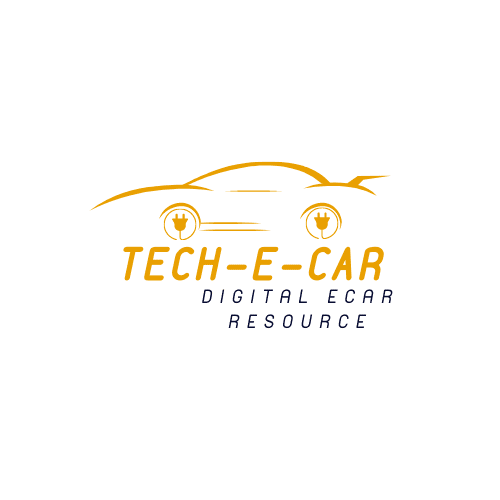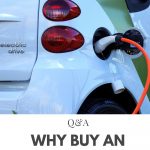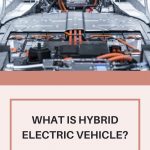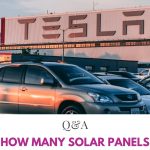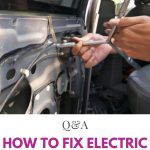SolarEdge VS Micro Inverter
Topic: SolarEdge VS Micro Inverter
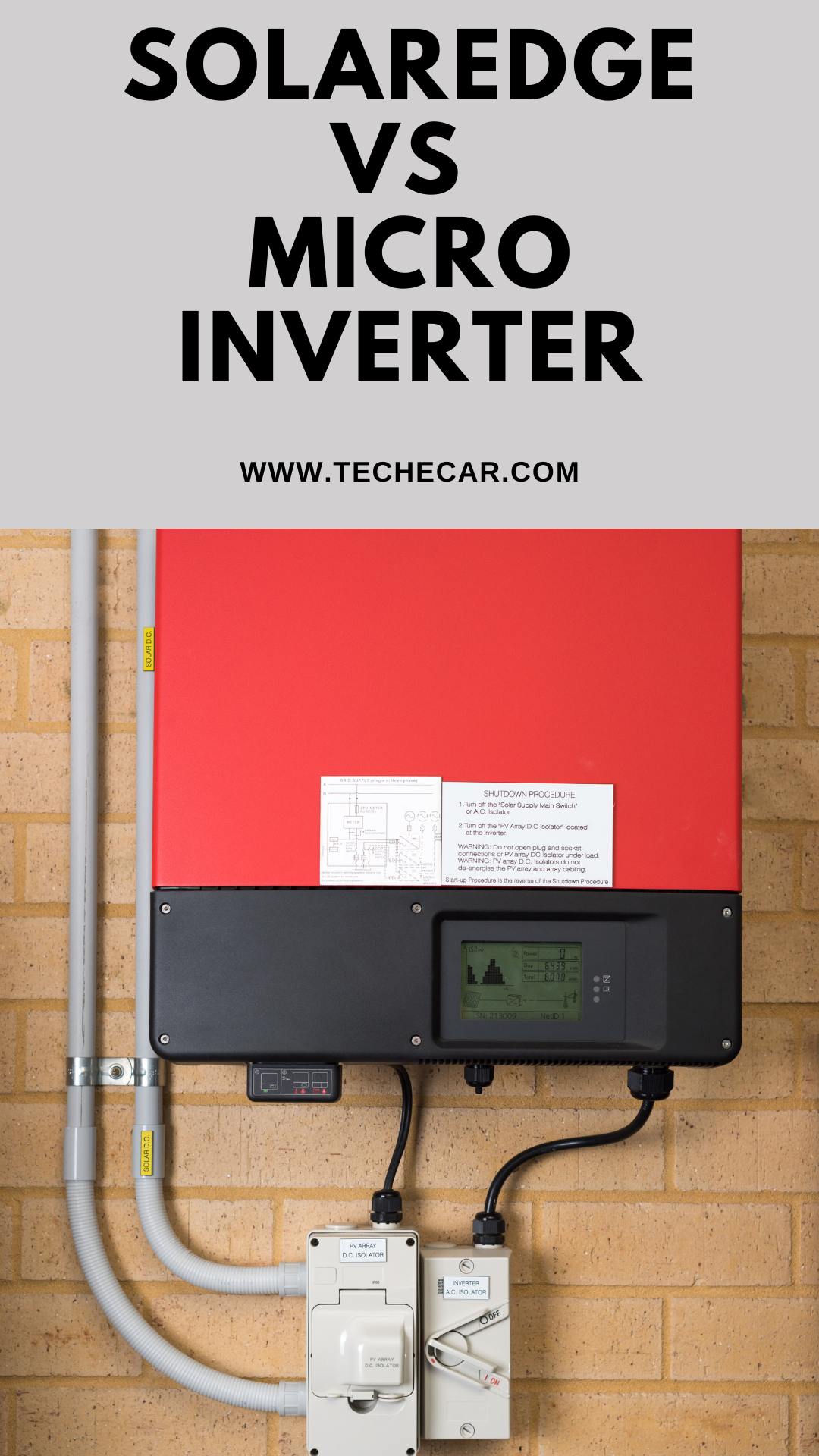

SolarEdge VS Micro Inverter
The battle of the inverter titans: these two businesses use opposing technologies and have created a rivalry among house and business owners who want to go solar, SolarEdge vs Enphase. SolarEdge and Enphase are the two largest solar inverter manufacturers. They control 95 per cent of the global inverter industry, with Enphase accounting for 48 per cent and SolarEdge for 40 per cent in the United States alone. Our solar specialists compared the goods of both firms to help consumers understand the differences and determine which is best for them.
We must first grasp the technologies behind inverters to determine the best inverter type. We also need to consider how it works in the context of a solar array.
Inverters for solar power come in a variety of shapes and sizes.
Inverters’ main job is to convert direct current (DC) into alternating current (AC) to use electricity. A solar system would be useless if it didn’t have an inverter to convert the current. As a result, whether you pick SolarEdge or Enphase, they both play an important part in the operation of a residential solar system. While you may come across conflicting information about various brands, you must first grasp the three basic types of inverters before deciding.
- Inverters for Strings (Centralized)
- Microinverter
- A system with Power Optimisers (String Inverters and Power Optimisers)
- Module-Level Power Electronics refers to the combination of microinverters and power optimisers (MLPEs).
Consumers have always preferred string inverters because of their cost-effectiveness and overall efficiency for larger installations. On the other hand, power Optimiser Systems and Microinverters have exploded in popularity on the market.
This is due to technology breakthroughs that have greatly reduced the price and increased module-level capabilities. String inverters are known for their inflexibility and lack of monitoring capabilities; MLPEs, on the other hand, are far more sophisticated.
However, consumers should be aware that both SolarEdge and Enphase inverters are MLPEs. Enphase uses Microinverter technology, while SolarEdge uses Power Optimizer System technology.
Enphase
Enphase Energy is a publicly-traded firm situated in Northern California created in 2006. They make solar-related accessories such as batteries and inverters. Customers may use their inverters to make their solar systems more productive, reliable, smart, and safe to operate. Inverters provide optimal output in a beautiful, long-lasting design.
SolarEdge
Due to its distinctive design, SolarEdge is becoming a popular choice in the United States. The company, which has its headquarters in Israel, was created in 2006 and provided a wide range of inverters for residential and commercial applications.
PV Power Optimizers, PV Monitoring Portals, and Solar Inverters are all available. They make inverters that use power optimisers to get the most power out of every panel.
Customers benefit the most from knowing that data from monitoring each panel is available, allowing them to lessen the impact of shading and other performance issues. They’ve also been shown to be safer than other inverter alternatives. They can keep lower voltages and shut down quickly in an electrical short.
Scalability of SolarEdge vs Enphase
When compared to Enphase microinverters, the SolarEdge approach has higher scaling constraints. SolarEdge systems are constrained by the size of the central inverter, which can only accept a specific number of solar panels.
Still, Enphase microinverters offer greater scalability by simply adding solar panels compatible with compatible microinverters.
Scalability is important to clients who anticipate an increase in future power usages, such as installing an electric vehicle or a large battery backup system. When you have a microinverter system, you may theoretically add an endless number of panels (some adjustments may be required, of course).
Still, you may need to update the central inverter to expand the number of solar panels.
There is a clear winner in the SolarEdge vs Enphase debate when it comes to scalability. Enphase’s capacity to scale, and scale retroactively, gives it an advantage. However, not all customers require the ability to scale in a way that has a major impact.
On the other hand, while Enphase’s scalability capabilities appear far more robust on paper, they are not as complex as they appear.
Backward Compatibility & Enphase
Enphase has made technological advances in recent years, progressing from an earlier model, the MP50, to the present IQ series. What is the problem for homeowners and business owners?
The new IQ models are not backwards compatible, according to Enphase. This means that customers with an older generation of Enphase inverter technology will not scale easily. To upgrade or expand their solar array, they still need to buy all new inverters.
Enphase vs SolarEdge: Battery Backup Options
Adding backup battery storage options to solar systems has proven to be one of the industry’s largest and most recent trends. The solar energy that is not used is stored in a battery and used when needed, such as during a power outage or when solar production is insufficient to satisfy home energy demands.
Day or night, a combination of solar and battery power is utilised to power key loads such as the refrigerator, TV, lights, and AC outlets when there is a power outage.
StorEdge Backup Solution from SolarEdge
The StorEdge DC-coupled backup technology, in addition to on-grid capabilities, instantly supplies homeowners with backup power during grid outages. The system is built on a single-phase StorEdge inverter that controls solar production, consumption, storage, and backup power and is compatible with high-voltage LG Chem RESU batteries.
LG batteries have proven to be one of, if not the finest, options available. Other higher-capacity backup battery options are available, but LG’s RESU batteries provide the most bang for your buck.
SolarEdge VS Micro Inverter
When purchasing a solar panel kit with so many equipment options, it’s easy to become confused in the decision-making process. One of the most often asked customer questions is the distinction between microinverters and a system like SolarEdge, which combines DC optimisers with a string inverter.
Let’s start with the similarities between these two systems.
With maximum power point tracking (MPPT) technology, both SolarEdge and microinverters will maximise the power from each solar module. With an MPPT device at each solar module, shadow and orientation concerns with ordinary string inverters are reduced.
Another feature that both SolarEdge and microinverter systems have in common is module-level monitoring, allowing you to observe how each solar module functions separately.
Both systems also meet the 2014 NEC Rapid shutdown standards, as the conductors from the roof will not be activated if the system is shut down using the ground-level disconnects.
So, what’s the difference between microinverters and SolarEdge? It all comes down to where the AC to DC electricity is converted. The solar modules generate DC electricity, converted to AC power via a microinverter at the solar module.
DC optimisers in a SolarEdge system track the maximum power point at the module but do not convert the power to AC. The “conditioned” DC electricity runs down the roof cables and is converted to AC power at the central inverter, generally located near the building’s main service panel.
Now comes the fun part: deciding which one is the best. Everyone in the solar industry has a point of view, and the bottom line is that you must make your own decision. Let’s have a look at some of the elements that will influence your choice.
Cost
In this case, the total cost of the system must be assessed.
When purchasing microinverters, the monitoring system, and the trunk cable, you must pay for the microinverters (which is a separate part for some brands and not others).
Depending on how you want the monitoring to work, you’ll buy the DC optimisers, string inverter, and maybe a monitoring option when you buy the SolarEdge system.
The cost of individual microinverters will be higher than the cost of DC optimisers (you are paying for all the DC to AC conversion electronics in every microinverter). For both systems, the monitoring equipment is usually the same price. Then you must purchase an inverter from SolarEdge.
As a result, if you’re installing a small system (under 3.8kw), microinverters will cost less than SolarEdge. Microinverters will cost more than SolarEdge (over 3.8 kW) if you’re installing a more extensive procedure.
Installation
You place a device at each solar panel (either the solar racking or the panel frame) in both systems, so that portion is the same.
You’ll need a junction box on the roof with microinverters to connect the trunk cable system to the conductors that will carry the electricity down to your main service panel. Because these wires are average AC power, the NEC code does not specify how they must be installed.
You’ll be able to send the conductors straight to a circuit breaker in the main service panel using a minor microinverter system (minus possible city or electric company requirements on the need for a separate AC disconnect).
If your microinverter system is more extensive, you’ll probably want to combine your branch circuits with an AC subpanel. Microinverters are usually limited to 20 amp branch circuits (typically 12-17 modules). The circuit breaker necessary for your microinverter monitoring system can also be installed in this AC subpanel.
For SolarEdge, each string (usually 24-25 modules) can be connected to the roof using MC4 compliant connectors before being routed through the conduit. The conductors leading to the inverter will be carrying higher-voltage DC power.
If these conductors run within the building, the NEC requires that they be placed in a metal conduit before the first readily accessible disconnect, usually the inverters. The SolarEdge inverter is installed on a wall and connected via a circuit breaker to the primary service panel.
Because the differences in the installation are modest, there isn’t much of a difference in difficulty or cost between the two systems.
Aesthetics
Both the microinverters and the SolarEdge DC optimisers are designed to be positioned beneath the solar modules, so all you see on the roof are solar modules in either instance.
With SolarEdge, an inverter must be put on a wall somewhere, whereas microinverters do not require an inverter, making a microinverter installation look cleaner.
Reliability
All manufacturers offer warranties to cover equipment failures, but failure rates differ, and not all guarantees are created equal. The length of the contract, the scope of the security, and the manufacturer’s lifespan are all factors to consider.
Because microinverters convert DC to AC, they are more sophisticated than DC optimisers. As a result, the failure rate of microinverters is higher. Microinverter warranties range from ten to twenty-five years, depending on the manufacturer.
In most cases, lesser warranties can be extended to 20 or 25 years. Some microinverter manufacturers do not cover labour costs when replacing equipment, so keep that in mind before purchasing.
Also, despite many years in operation, the manufacturer of the most popular brand of micro inverters has yet to show a profit, so you should evaluate whether they will be around to uphold their guarantees in the future.
The DC optimisers from SolarEdge have a 25-year warranty, while the inverters have a 12-year warranty that can be extended to 20 or 25 years.
Efficiency
SolarEdge technology particularly shines in this area.
SolarEdge has an advantage because the power is not converted to AC at the module level. The latest SolarEdge HD inverters have a 99 per cent efficiency rating, compared to a standard microinverter efficiency of 97 per cent.
In the end, the SolarEdge system will produce more power from the same modules than microinverters. Throughout a system’s 25-year life, a 2% increase in output can mount up.
Which is superior, SolarEdge or Enphase?
Which is better: Optimised Solar Systems or Micro Inverter Solar Systems?
Hello everyone, Dale from Pacific Sun Technologies here. I’ve talked about battery storage alternatives and solar panel manufacturers in recent weeks. Still, I haven’t spoken about solar inverter possibilities because you can’t convert the DC power from your solar panels to the AC power that your home runs on without one.
So, today’s video is crucial, and it will assist you in determining which option is best for your position and budget. But first, please subscribe to the channel; it just takes a second to do so by clicking the button below, and while you’re at it, press the bell symbol as well.
You’ll be notified of future videos like this one if you do so. Also, if you live in our area of Southern California, don’t forget to visit us online for a free solar quote; you may be overpaying for your energy, and getting a second opinion never hurts.
Let’s speak about solar inverters now because there are many different manufacturers. I’ve already done a video on the advantages of a micro-inverter system over a string inverter system.
The two most popular solar inverter solutions, SolarEdge and Enphase, were not discussed in the video. But before we go into the advantages and disadvantages of each, let me explain how they differ.
Enphase is a micro-inverter system, which means each panel has its small inverter, whereas SolarEdge has a solar panel optimiser on each board that connects to a single inverter.
To appreciate the benefits and drawbacks of each, you must first comprehend how they function. So, let’s begin with SolarEdge, which is our most popular option.
With nearly 15 years of cutting-edge technology, SolarEdge is a global leader in the solar inverter market. SolarEdge is a NASDAQ-listed company that has consistently increased revenue and gross margins.
SolarEdge is the preferred partner for installers like Pacific Sun Technologies because of its financial strength and stability, as well as its cutting-edge technology. SolarEdge has shipped over 14.6 gigawatts of power worldwide and has over 1.3 million active installations. So they’re not just any inverter company; they’re the best.
Consumers should be aware of this information because what good is a product if the company that made it goes out of business? It’s not looking good.
So here’s what sets SolarEdge apart:
They were the first solar inverter company to produce a solar panel optimiser to work with their inverters. Module-level monitoring and voltage regulation were made possible as a result of this.
This means you can see the power output of each panel on your roof, and if one of them is underperforming due to shading or other factors, the rest of the modules are impacted.
This is also true for Enphase micro-inverter systems, except a SolarEdge optimiser transmits solar power to a single inverter. Still, an Enphase micro-inverter transforms DC energy from the solar panel to AC on the roof right away.
The SolarEdge optimiser allows you to generate the most power possible every day. And if one optimiser fails, that’s fine since a 25-year guarantee protects the solar optimiser, and it won’t affect the other solar panels or optimisers it’s attached to, as I mentioned a minute ago.
Moving on to the inverter, SolarEdge has made significant advancements in recent years, not just in terms of efficiency but also in terms of reliability. The standard inverter guarantee is 12 years but preferred, and qualified partners can extend it to 25 years.
One of the benefits that many overlook and mistake for a disadvantage is that the entire system will shut down if the inverter fails. And while this is true and bad, a fast warranty call will have you back up and running in no time.
But here’s the thing: with a 12-year or 25-year guarantee, you’re more likely to have items discontinued as technology advances, and we’ve seen a lot of solar inverter devices cancelled and replaced with something that may or may not be compatible.
We’re not seeing this with string inverters or optimised inverters as much as we are with older micro-inverters and new micro-inverters not being compatible with older panels or each other. This implies you’ll either have to pay for new components not included in your previous system or get a refurbished item.
However, in the next 25 years, SolarEdge’s optimiser technology is unlikely to change dramatically; it may get smaller and possibly even more efficient (remember, it’s 99 per cent efficiency), but the fundamental communication protocols will remain the same.
SolarEdge is likely to incorporate those protocols into a new inverter if they do. So, if your SolarEdge inverter fails, don’t worry; your warranty will cover the latest and best, and it will function seamlessly with your existing optimised system.
This brings me to Enphase and micro-inverter technology.
Because they’re the most excellent products on the market, we presently offer both SolarEdge and Enphase to consumers. And now that we’ve gone over some of the primary benefits of a SolarEdge-optimized solar system let’s take a look at some of the advantages and disadvantages of Enphase.
Raghu Belur and Martin Fornage created Enphase in March of 2006, right here in California.
In June 2008, they introduced the world to the first microinverter system. Enphase had shipped one million micro-inverters by September of that year. By the end of 2011, Enphase was being shipped worldwide.
Enphase went public in March 2012, and its stock is now traded on the NASDAQ. Enphase brought a bigger vision of their product to market during the next five years. This includes battery storage as well as energy monitoring in the home.
And, as with SolarEdge, knowing the company’s history is beneficial to you. What good are a product and its warranty if the company isn’t going to stand behind it?
So, let’s discuss what distinguishes Enphase.
The ease of scalability and upgradeability is Enphase’s most robust selling feature. This means that because each solar panel and micro-inverter works independently of the others, you can add to your system as your energy needs change over time.
When compared to a string inverter or an efficient inverter system like SolarEdge, this is a bargain. Because depending on how much solar you want to add, you’ll probably need an entirely new inverter with these setups. Although you could add a few panels to these systems, they aren’t as scalable as Enphase micro-inverters.
Now, Enphase, like SolarEdge, allows for module-level monitoring, and if a module or micro-inverter fails, it’s OK because they’re all independent of one another. As of this video, all micro-inverters are covered by a 25-year warranty. Enphase now offers four distinct micro-inverters for use with various wattage panels.
This is where you need to pay attention because the price difference between these four is significant, and while they all work on any panel, some will perform better than others.
The IQ7 microinverter has the lowest wattage and should be used with less than 305 watts panels.
The IQ7 PLUS micro-inverter is the next step up and should be used with panels rated between 310 and 340 watts.
The Panasonic HIT modules require a specific micro-inverter called the IQ7 X.
The IQ7 A is the newest micro-inverter and has the maximum power output; it should be used with modules with more than 350 watts.
I didn’t mention this to SolarEdge because matching your inverter to the size of your solar installation is simple. If you have a 4-kilowatt solar system, you should use a 3.8-kilowatt inverter, and if you have an 8-kilowatt system, you should use a 7.6-kilowatt inverter.
To sum up, it’s difficult for me to claim one system or manufacturer is better than the other because they both have advantages and disadvantages that fall into distinct categories.
However, if you plan on purchasing an electric vehicle, installing a pool, or growing a hydroponic garden, Enphase is likely to be the best option for you.
SolarEdge is perfect for you if you want the most bang for your buck, and expandability isn’t as important because you don’t plan on buying any of the items I just stated.
That concludes today’s video; we appreciate your time and interest, and as a token of our appreciation, we’re offering you $500 off your solar system purchase. Mention this video when contacting us through our website. Don’t forget to subscribe to the channel to receive notifications when new videos like this are released.
People Also Ask:
Which is better SolarEdge or Enphase?
Enphase systems will likely be more expensive and have a lower efficiency rating. They do, however, come with a standard 25-year warranty. A SolarEdge system will almost certainly be less expensive (even with a warranty extension), resulting in a higher total return on investment.
Does SolarEdge use micro inverters?
Consumers have always preferred string inverters because of their cost-effectiveness and overall efficiency for larger installations. Enphase uses Microinverter technology, while SolarEdge uses Power Optimizer System technology.
Why is SolarEdge better than Enphase?
In comparison to Enphase micro-inverters, SolarEdge’s scalability is limited. The size of the central inverter, which can only accept a fixed number of solar panels, is a limitation of SolarEdge systems. Enphase micro-inverters offer more scalability by simply adding solar panels that are compatible with compatible micro-inverters.
Recommended Articles:
Bombardier Neighborhood Electric Vehicle
DC DC Converter Electric Vehicle
Electric Vehicle Charging Stations Oahu
GE Electric Vehicle Charging Station
